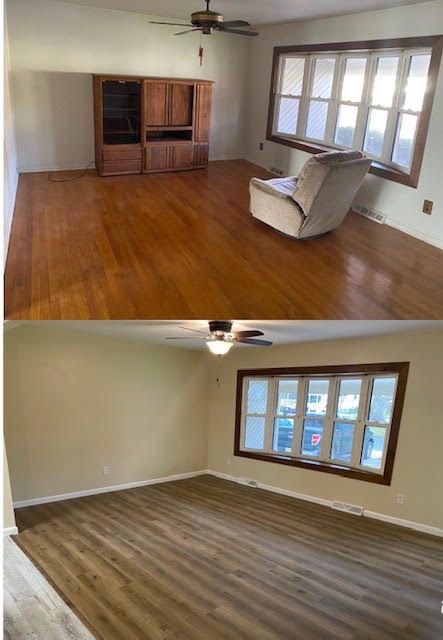The sun paints the Pikes Peak a fiery orange, mirroring the burning ambition of Colorado Springs homeowners eager to sell. But in the fast-paced world of investor sales, timing isn’t just everything – it’s the difference between a swift ascent to a successful closing and a slow, frustrating trek down the market mountain. Fear not, eager sellers, for this guide equips you with the knowledge to present your property at the peak of its potential, enticing investors and achieving a lightning-fast sale worthy of Usain Bolt himself.
Knowing When to Strike Gold:
- Market Momentum: Read the market like a weatherman. Is investor appetite robust? Are similar properties selling quickly? Understanding market trends lets you ride the wave to a speedy sale.
- Seasonal Savvy: Don’t hibernate your listing! Spring and summer, with their vibrant landscaping and bluebird skies, often see heightened investor interest. Consider listing strategically to maximize appeal.
- Competition Calm: Be mindful of competitors. If the market is flooded with similar properties, waiting for a lull can increase your chances of standing out and attracting eager buyers.
Polishing Your Property for Peak Performance:
- Curb Appeal Charmer: First impressions matter! Spruce up your home’s exterior with fresh paint, manicured landscaping, and inviting touches. Make it the most Instagrammable house on the block!
- Staging Superstar: Showcase your home’s potential with strategic furniture placement, decluttering, and professional-quality photos. Virtual tours can also entice out-of-town investors.
- Paper Trail Powerhouse: Gather all necessary paperwork like property deeds, inspection reports, and loan documents beforehand. A streamlined process screams “professional” to savvy investors.
Reaching the Investor Gold Mine:
- Target Your Audience: Don’t cast a wide net. Identify the type of investor most likely to be interested in your property. Tailor your marketing and presentation accordingly.
- Digital Dynamo: Leverage the power of online platforms like Zillow, Trulia, and investor-focused websites. High-quality visuals and enticing descriptions are key.
- Network Nirvana: Don’t underestimate the power of word-of-mouth. Talk to real estate agents, contractors, and local business owners to spread the word about your investment-ready property.
Negotiating with Investor Savvy:
- Know Your Bottom Line: Be prepared to walk away if the offer doesn’t meet your expectations. But also consider flexibility, especially if your market is cooling down.
- Contingency Considerations: Discuss potential contingencies like quick closings or leaseback options to make your offer more attractive and accelerate the process.
- Work with a Pro: Consider partnering with a seasoned real estate agent experienced in investor sales. Their expertise can navigate negotiations and ensure you get the best deal possible.
Selling your Colorado Springs property to investors quickly demands a strategic approach. By understanding market timing, maximizing your property’s appeal, and reaching the right buyers, you can transform your listing into an irresistible gold nugget for eager investors. Remember, it’s not just about price – it’s about presentation, timing, and understanding the investor mindset. So, prepare your property, embrace the market tides, and watch your “For Sale” sign disappear faster than a Colorado summer snowstorm!
Bonus Tip: Consider attending local investor forums or real estate events to connect directly with potential buyers and showcase your property’s potential in person. Networking can open doors and accelerate your path to a successful sale.
This article provides a comprehensive overview of key strategies for selling your Colorado Springs property quickly to investors. It emphasizes the importance of market timing, property presentation, effective marketing, and negotiation skills. Remember to use vibrant imagery, local references, and a positive, proactive tone to empower sellers to confidently navigate the investor market and achieve a swift, successful sale. Let’s help them scale the mountain of investor interest and reach the peak of their selling dreams!
Fast-Track Your Sale: Proven Techniques for Selling Your Colorado Springs Property to Cash Investors
Selling your Colorado Springs home or investment property traditionally through a real estate agent can take months with no guarantee of securing agreeable terms. But direct sales to ready cash investors fast-track transactions, providing financial liquidity and closing certainty within your timeframe.
Cash buyers offer convenient solutions by purchasing properties outright, as-is, for fair market prices that may exceed selling through traditional channels once you calculate delays, repairs, and concessions. Their business models bank on securing below-retail acquisitions to profit on eventual resale after renovations and market upticks. By understanding their motivations, connect your mutual goals.
Optimize your listing to attract investors by emphasizing details like recent mechanical updates, strong structural integrity requiring fewer rehab costs, and location potential based on demographics and growth indicators. Upload interior and exterior photographs clearly depicting living areas and storage spaces. Provide detailed disclosures indicating known defects.
When buyers request showing appointments, ask questions that qualify their capabilities so you effectively pre-screen away window shoppers from qualified buyers who’ve secured funding and intend to purchase investment properties fast. Don’t hesitate moving forward with an investor demonstrating preparedness to close within days of accepted terms.
The takeaway? When needing or wanting to exit real estate ownership without delays of the MLS, competent cash buyers satisfy that demand in Colorado Springs. Position your listing and interactions to secure a reputable investor ready to acquire properties to reinvigorate into community assets. Then watch your liquidity unlock within weeks instead of months languishing on the market.
Let me know if you would like me to expand on any specific strategies or topics around selling quickly to real estate investors in the Colorado Springs market!
Selling your property to investors in the vibrant real estate market of Colorado Springs requires a strategic approach. Successfully navigating the investor landscape involves understanding the preferences, motivations, and criteria that attract the right buyers. Whether you’re looking for a swift sale or aiming for a lucrative deal, these insights will guide you in attracting investors who align with your goals.
Understanding Investor Preferences in Colorado Springs
Investors in Colorado Springs, like elsewhere, often have specific preferences and criteria when considering a property. Understanding these preferences is essential for tailoring your approach to attract the right buyers.
1. Location Matters
Investors are keenly interested in the location of a property. Proximity to amenities, schools, parks, and major thoroughfares can significantly influence their decision. Highlighting the advantageous location of your Colorado Springs property can attract investors seeking prime real estate.
2. Financial Viability
Investors, especially those looking for rental properties, assess the financial viability of a potential investment. Providing detailed financial information, such as potential rental income, property taxes, and estimated expenses, can make your property more appealing.
3. Market Trends and Potential Appreciation
Investors often look for properties in areas with strong market trends and the potential for appreciation. Research and present data on the Colorado Springs market, showcasing its growth and future prospects, to pique investor interest.
Crafting an Investor-Friendly Presentation
Once you understand what investors are looking for, it’s time to create a presentation that speaks to their interests.
1. Highlight the Potential for Returns
Emphasize the potential return on investment (ROI) that your property offers. Provide realistic projections based on market trends, showcasing how the property aligns with the investor’s financial goals.
2. Showcase Renovation Opportunities
If your property requires renovations, present these as opportunities rather than challenges. Investors often see untapped potential in properties that can be upgraded or renovated for added value.
3. Emphasize Flexibility
Investors appreciate flexibility in negotiations. Whether it’s the closing timeline, financing options, or other terms, being open to negotiation can attract a broader range of investors.
Leveraging Digital Platforms and Marketing Strategies
In the digital age, online presence is crucial for attracting investors. Utilize various platforms and strategies to maximize your property’s visibility.
1. Professional Photography and Virtual Tours
Investors often start their property search online. Engage them with high-quality photographs and virtual tours that showcase the property’s features and potential.
2. Engaging Descriptions
Craft compelling and informative property descriptions. Highlight key selling points, such as the neighborhood’s appeal, potential for value appreciation, and any unique features that set your property apart.
3. Utilize Real Estate Investment Networks
Tap into local and online real estate investment networks. These platforms connect sellers with investors actively seeking opportunities. Joining these networks can expose your property to a pool of motivated buyers.
Networking with Local Investors
Building personal connections with local investors can be a game-changer. Attend real estate events, join investment clubs, and engage with professionals in the field.
1. Attend Local Real Estate Meetings
Colorado Springs hosts various real estate events and meetings. Attend these gatherings to network with investors, share information about your property, and gain insights into the preferences of potential buyers.
2. Collaborate with Real Estate Professionals
Real estate agents and professionals often have networks of investors. Collaborate with them to tap into these connections and increase the visibility of your property among potential buyers.
3. Host Property Tours and Open Houses
Organize property tours and open houses specifically targeting investors. This provides them with the opportunity to assess the property firsthand and envision its potential.
Conclusion: Tailoring Your Approach for Success
Navigating the investor landscape in Colorado Springs involves a tailored approach that aligns with investor preferences. By understanding what investors are seeking, crafting an appealing presentation, leveraging digital platforms, and networking with local professionals, you position your property for success in the competitive real estate market. Remember, attracting the right investors is not just about the property; it’s about presenting an opportunity that aligns with their investment goals and aspirations.

